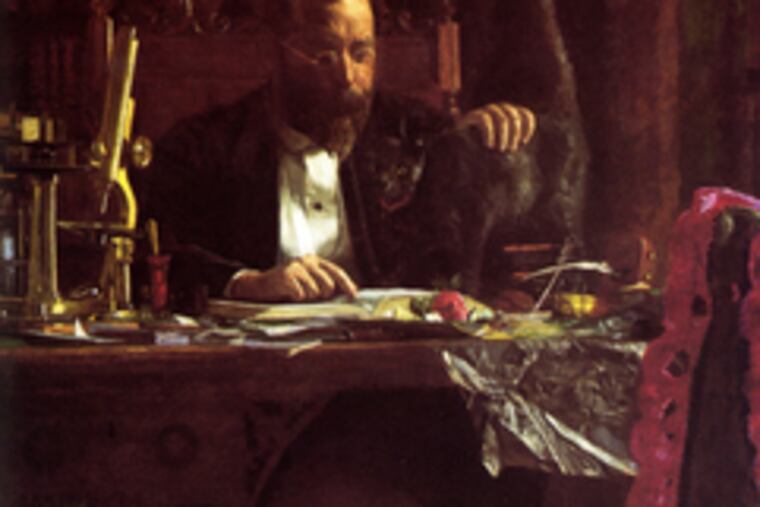2d painting by Eakins sold
Thomas Jefferson University, fresh from the sale of Thomas Eakins' masterpiece, The Gross Clinic, for $68 million, has sold a second Eakins canvas, a portrait of Dr. Benjamin H. Rand, university officials announced yesterday.

Thomas Jefferson University, fresh from the sale of Thomas Eakins' masterpiece,
The Gross Clinic
, for $68 million, has sold a second Eakins canvas, a portrait of Dr. Benjamin H. Rand, university officials announced yesterday.
The as-yet-unbuilt Crystal Bridges Museum of American Art, backed by Wal-Mart Stores Inc. heiress Alice Walton, has acquired the painting, which Rand donated to the university in 1877, three years after it was painted.
Rand taught chemistry at Central High School, transferring later to the Franklin Institute and, eventually, to Jefferson Medical College.
The portrait marked Eakins' first effort at capturing the intellect and drama of a medical figure.
"It's one of my favorite paintings," said Kathleen Foster, curator of American art at the Philadelphia Museum of Art. "The appeal in it is the affection Eakins had for Rand, who was his high school chemistry teacher."
University officials declined to reveal the purchase price, but others familiar with the sale put the figure somewhere in the neighborhood of $20 million. Christie's auction house negotiated the sale.
Before Crystal Bridges' scheduled opening in Bentonville, Ark., in 2009, the Rand portrait will be lent to the Philadelphia Museum of Art, beginning sometime this spring.
According to a statement Jefferson released yesterday, "proceeds from the sale of the painting will be used to support the mission of the university and the implementation of its new strategic plan."
University officials were unavailable to elaborate.
Jefferson sparked controversy late last year when it announced it had sold The Gross Clinic to a partnership of Walton's Crystal Bridges and the National Gallery of Art in Washington. Jefferson alumni had acquired the painting, and they donated it to the university in 1878, where it became a symbol of the school for generations of graduates.
A clause in the sales contract provided local institutions the opportunity to match the sale price in 45 days and head off the sale to an outside party.
A breakneck fund-raising campaign began, and just before Christmas a partnership of the Art Museum and the Pennsylvania Academy of the Fine Arts announced it had raised enough in donations and loans to acquire the mammoth canvas, widely viewed as Eakins' greatest.
The Gross Clinic is currently on view at the academy.
After the academy acquired the painting, however, academy officials felt compelled to sell one of their finest paintings, Eakins' The Cello Player, for an estimated $16 million to $18 million to avoid being saddled with significant long-term debt. (More than $37 million has been raised, excluding loans and sales, toward the $68 million purchase price. Art museum officials are contemplating whether to sell any art to cover their share of the debt obligations.)
Jefferson's decision to sell The Gross Clinic riled many in the region who believed the painting embodied the city's cultural life, but Jefferson alumni were particularly upset with the sale.
This time around, Jefferson president Robert Barchi informed the alumni association of the possible Rand sale sometime in the last several weeks. According to alumni association officials, that organization's executive committee voted to oppose the sale.
Barchi then took the question to the Jefferson faculty and medical staff, who supported the decision to sell, Jefferson officials said. A university spokeswoman wrote in an e-mail that Barchi consulted the "professorial advisory committee, which supported the sale by an overwhelming majority of its members."
Nevertheless, one source said at least a portion of the Jefferson staff appeared "demoralized" on the subject of art sales.
"What else do we have to sell?" one Jefferson doctor asked. "What's next?"
The sale of The Gross Clinic and the Rand portrait leaves Jefferson with one remaining Eakins canvas (and more than 1,000 other works of art), the 1905 portrait of Professor William Smith Forbes, an anatomist, surgeon, and chairman of the Jefferson anatomy department.